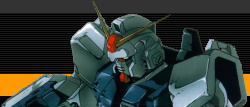|
|
Painting Tools
|
Here are the tools that I most commonly use when working on models. Although there are a lot of
other tools around, I will provide information on the ones that I use most frequently.
|
Paint Bottle
 |
|
It's always good to have a few bottles to store
the paint mixtures! You always want to mix more paint than you need, just in case you run out of paint half-way
through painting, or you need to go back to fix some parts and you don't have that paint mixture anymore. |
|
Droppers
 |
|
Used to portion out paint and thinner. |
|
Cotton Swabs
 |
|
It's quite useful for stickering or wiping out paints. |
|
Paint Brushes
 |
|
There is no such thing as a "good" model being made
without the use of a hand brush. You need at least two brushes - one with a very fine tip for small details and lining,
and one with a flat head for dry brushing. |
|
Airbrush
 |
|
This is the second most important tool required
for a good paint job. Always try to get double-action airbrushes rather than single-action. A single-action air brush
can't do as many special effects as the double-action one. I recommand Iwata's airbrush. For painting with
Mr. Color, Iwata Eclipse HP-CS airbrush. It's easy to clean and use, and it does wonderful spraying. |
|
Air Compressor
 |
|
If you are going to do more than a dozen paint jobs
with an airbrush, investing in an air compressor will be more economical. If you can, try to get one with an air-tank
so the air pressure is more consistant. A silent air compressor will be even better so you don't wake up others while
airbrushing in the middle of night... |
|
Mask
 |
|
If you are planning on using enemal or lacquer base
paint, you had better get yourself a mask. If you are going to do airbrushing, then it's neccessary to wear a mask
while you are spraying (it does not matter what kind of paint you use, because all the paints are poisonous). |
|
Mixing Stick
 |
|
You need something to mix your paint. I use the
one made by Tamiya. For the flat side I sometimes use double sided tape in order to stick a piece of sand paper
there to create a sanding stick. As for the curved side, I can use it for pressing stickers (it's curved, so it does not
scratch the paint). |
|
Masking Tape
 |
|
I like to use the brand made by Tamiya. It has
three different sizes (6, 10, and 18). It's expensive, but works very well (better than all the other masking tapes
that I have tried to date). It's sticky, but not so sticky as to peal the paint off. I recommend using sizes 18 and 10. |
|
Liquid Mask
 |
|
A liquid that is brushed onto the area that needs
cover. It dries in about 20 minutes into a rubbery coating, and is easily removed afterwards. It can be used for
masking complicated shapes that masking tape cannot do. The only thing is that you will need to use a hand brush
to fix the edges afterwards because it does not create sharp edges like masking tape does. |
|
Sealers
 |
|
Sprays used to seal and protect the completed
finish on a model. Comes in flat, semi-gloss/satin, and gloss finishes. I like to use Gunze Sangyo's Mr. Super
Clear brand. |
|
Sakura Pigma Markers
 |
|
This is the marker that I once used for marking
panel lines on Gundam kits. The smallest tip is about 0.20mm, which is a lot thinner than Gundam markers (and yes,
it's also cheaper than a Gundam marker). |
|
Mr. Mark Softer
 |
|
For decal use. Apply it on the surface before
applying the decal. It will make the decal not as sticky for a little while so you can work on its position (people
don't always get the position right on the first try, especially beginners). |
|
Double Headed Stylus
 |
|
A tool for painting and pressing air bubbles out
of decal. Many people also use it for drawing the eyes of anime figures. |
|
Sandpaper
 |
|
I suggest getting waterproof sandpaper. You will
need different grips of sandpaper so buy them in a pack to save yourself a lot of money. Available in most hardware
stores (in the paint and automobile section). |
|
Brass Stick
 |
|
Mostly used for resin kits. I use them to pin two
pieces of resin together. |
|
|



